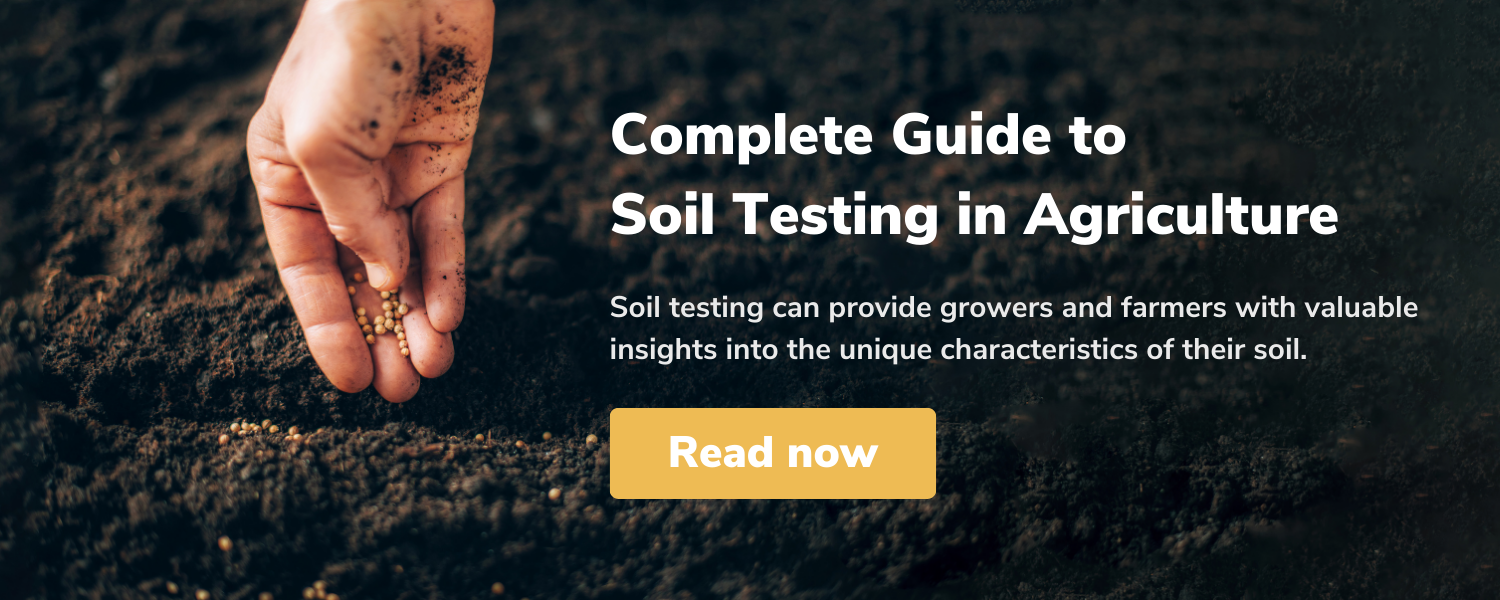Share this
Early Warnings, Better Outcomes with Biological Testing
by Sarah Basiri on 17/Jun/25
Farmers know that the earlier you catch a problem in the field, the sooner you can nip it in the bud. While traditional soil tests offer a snapshot of chemical conditions, they often miss the deeper biological signals that indicate how a crop will respond to its environment. That is where biological soil testing offers a new layer of insight, especially when done early in the season.
Why Early-Stage Biological Testing Matters
At the start of the season, everything hinges on setting crops up for success. Early root development, nutrient uptake, and resistance to stressors and seedling pathogens can all impact yields. Many of these factors are driven as much or more by the microbial conditions as by the physical and chemical conditions.
Biological soil testing focuses on the life within the soil, specifically the microbial community responsible for nutrient cycling, plant health, and overall soil function. By analyzing the DNA of these microbes, growers get eyes on dynamics otherwise invisible, long before symptoms appear above ground.
Spotting Risk Before It Becomes a Problem
How many times have you seen two otherwise similar fields get the same fertilizer applications and turn out notably different? Microbial communities play a direct role in processes like the conversion of ammonium and urea to nitrate, phosphorus solubilization, and organic matter decomposition. When microbial functions are out of balance, nutrient availability suffers. Early biological testing helps pinpoint bottlenecks, allowing growers to take corrective action before crops are affected.
For example, early testing might reveal that your soil lacks the microbes needed to make phosphorus available to plants—even when total phosphorus levels seem sufficient. In that case, you could adjust by using a more plant-available form of phosphorus or applying a biological input to boost the right microbial activity. This improves nutrient use efficiency and helps prevent yield loss.
Beyond nutrition, biological testing can flag disease and stress risks. Growth can be impacted before emergence by the crop detecting patterns of pathogenic threats in its environment and allocating scarce energy from growth to defensive preparations. Even germination can be affected. Be aware before you plant. Certain beneficial microbes are known to suppress soil-borne pathogens. If their populations are low, disease pressure may increase later in the season.
Similarly, you may find that key stress-mitigating plant allies are missing on ground you know faces specific stressors like heat, water variability, nutrient scarcity, or salinity.
Real-World Impact: Early Action Pays Off
In recent field trials, early-season BeCrop® biological testing helped identify high disease risk in lettuce fields in California. The test showed a deficiency in key microbial taxa associated with disease suppression. By proactively adjusting fungicide timing and integrating a bio-stimulant, growers were able to reduce crop losses and protect quality.
In another case, Midwest corn producers used early testing to uncover nitrogen cycling limitations linked to microbial activity. Rather than applying additional nitrogen across the board, they targeted the affected zones with a more tailored management plan, cutting costs and reducing runoff risks while maintaining yields.
Supporting Smarter In-Season Decisions
Using early biological testing as part of a broader agronomic toolkit unlocks a missing dimension of understanding for strategic decision-making throughout the season. Growers can fine-tune nutrient applications, proactively mitigate disease threats, and build more resilient cropping systems.
As an in-season support tool, BeCrop® biological testing offers an irreplaceable layer of insight rooted in the soil's living biology. It helps translate complex microbial data into actionable recommendations that protect crop performance and support long-term soil health.
You can purchase a BeCrop® Test on Biome Makers' website >>
The Bottom Line
Early detection is key to prevention. By integrating biological testing at the start of the season, growers can uncover hidden risks, optimize management strategies, and improve outcomes in the field. It is a proactive step toward more efficient, resilient, and sustainable farming.
Share this
- June 2025 (2)
- September 2024 (1)
- August 2024 (1)
- July 2024 (1)
- June 2024 (2)
- May 2024 (2)
- April 2024 (2)
- March 2024 (1)
- February 2024 (1)
- January 2024 (1)
- November 2023 (1)
- October 2023 (1)
- September 2023 (1)
- August 2023 (2)
- July 2023 (2)
- May 2023 (2)
- April 2023 (3)
- March 2023 (3)
- February 2023 (2)
- January 2023 (1)
- November 2022 (1)
- October 2022 (2)
- September 2022 (1)
- August 2022 (3)
- July 2022 (3)
- June 2022 (1)
- May 2022 (5)
- April 2022 (7)
- August 2021 (1)
- July 2021 (1)
- May 2021 (1)
- April 2021 (4)
- November 2020 (3)
- October 2020 (4)
- September 2020 (1)
- August 2020 (3)
- July 2020 (1)
- June 2020 (1)
- May 2020 (2)

